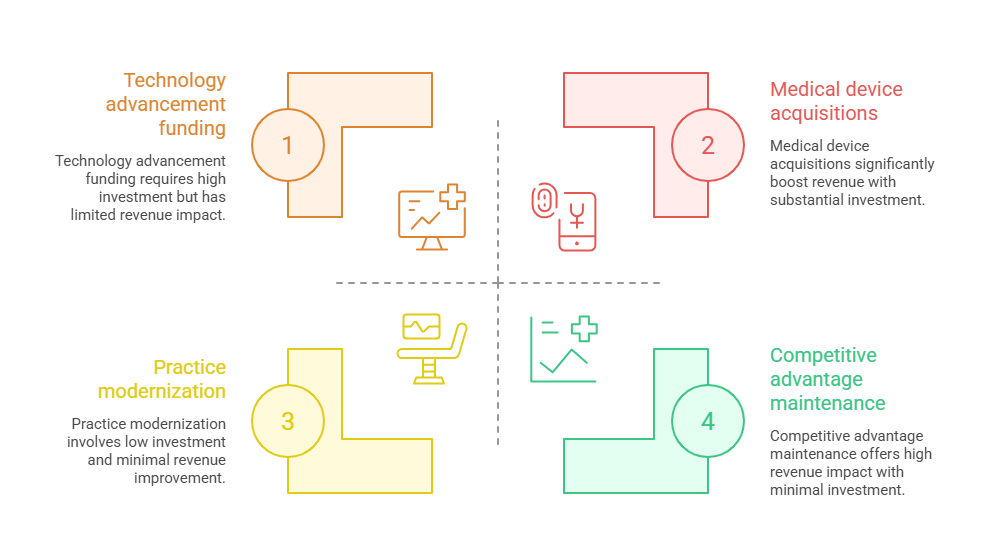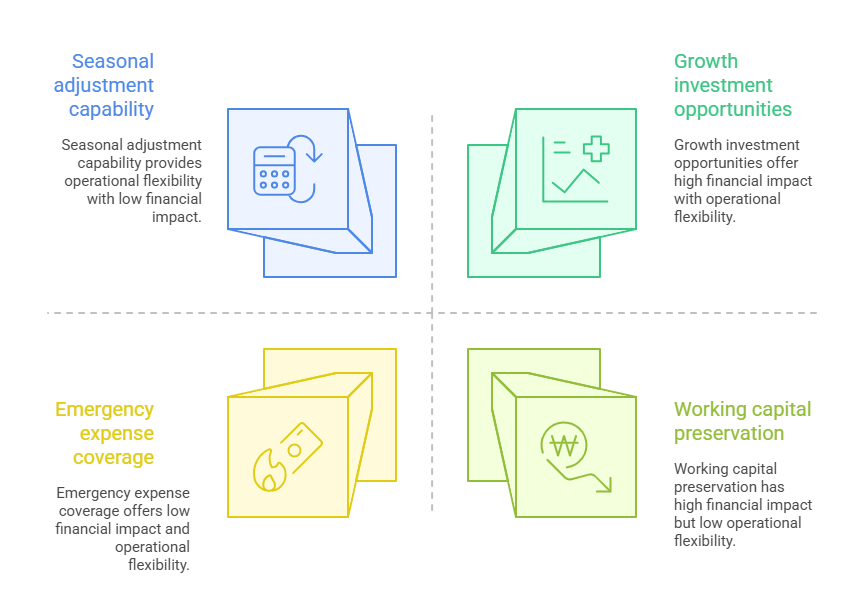Healthcare businesses face unique financial challenges that traditional financing often can't address effectively. From unpredictable patient billing cycles to the constant need for equipment upgrades, medical practices require funding solutions that understand their specific operational patterns. Revenue-based financing in the healthcare sector has emerged as a flexible alternative that aligns payment structures with the natural ebb and flow of healthcare revenues. This financing option may offer medical practices the cash flow flexibility they need to grow while managing the inherent uncertainties of healthcare operations.
Essential Features of Healthcare Revenue-Based Financing
Essential features of healthcare revenue-based financing distinguish this funding option from traditional banking products. Healthcare providers often find that conventional financing doesn't align with their unique operational needs and cash flow patterns.
- Percentage-based repayments: Instead of fixed monthly payments, providers typically repay a predetermined percentage of their monthly revenues, which may fluctuate with patient volumes and seasonal patterns
- No collateral requirements: Many revenue-based financing options don't require medical equipment or property as collateral, which could be beneficial for practices that prefer to maintain asset flexibility
- Faster approval processes: Healthcare providers might experience quicker funding decisions compared to traditional bank financing, as approval often focuses on revenue performance rather than extensive credit histories
- Revenue-aligned structure: Payment amounts typically adjust with business performance, potentially providing relief during slower periods and scaling with growth during busy seasons
Patient Billing Cycle Challenges Addressed
Patient billing cycles create significant cash flow challenges that revenue-based financing may help healthcare providers navigate more effectively. The complex nature of healthcare billing often results in delayed payments that can strain practice operations.
- Insurance processing delays: Revenue-based financing could provide working capital while practices wait for insurance companies to process claims, which may take weeks or months
- Accounts receivable gaps: Healthcare providers might use this financing to bridge the gap between service delivery and payment receipt, maintaining steady operations during collection periods
- Seasonal patient fluctuations: Practices often experience varying patient volumes throughout the year, and flexible repayment structures may help manage cash flow during slower periods
- Bad debt protection: When patient payments fall short, revenue-based financing repayments typically adjust accordingly, potentially reducing financial stress during challenging collection periods
Equipment Upgrade Financing Solutions
Equipment upgrade financing solutions through revenue-based financing may offer healthcare providers flexible options for modernizing their practices without the constraints of traditional equipment financing.

- Technology advancement funding: Medical practices could access capital for digital health systems, electronic health records, or telemedicine platforms without depleting cash reserves
- Medical device acquisitions: Revenue-based financing might support the purchase of diagnostic equipment, treatment devices, or patient monitoring systems that enhance care quality
- Practice modernization: Healthcare providers may use these funds for facility improvements, patient comfort enhancements, or equipment upgrades that could increase revenue potential
- Competitive advantage maintenance: Staying current with medical technology often requires significant investment, and flexible financing may help practices remain competitive in their markets
Step-by-Step Application Process
The step-by-step application process for healthcare revenue-based financing typically involves several key stages that providers should understand before beginning their funding journey.
- Revenue documentation preparation: Healthcare providers generally need to compile recent financial statements, bank statements, and revenue records that demonstrate their practice's earning patterns and stability
- Application submission and review: The initial application process often focuses on revenue history rather than credit scores, though providers should expect to provide basic business and personal information
- Financial performance analysis: Financing companies typically review the practice's revenue trends, patient volume patterns, and overall financial health to determine funding eligibility and terms
- Terms negotiation and approval: Once approved, providers usually receive funding offers with specific repayment percentages and terms that they can review and negotiate before acceptance
- Fund deployment and monitoring: After agreement, funds are typically disbursed quickly, and ongoing monitoring may involve regular revenue reporting to ensure compliance with repayment structures
Cash Flow Flexibility Advantages
Cash flow flexibility advantages represent one of the most significant benefits that healthcare providers might experience with revenue-based financing compared to traditional funding options.

- Seasonal adjustment capability: Healthcare practices often experience predictable seasonal variations in patient volume, and revenue-based repayments may automatically adjust to these natural fluctuations in business activity
- Emergency expense coverage: Unexpected costs such as equipment repairs, staff overtime, or facility maintenance could be managed more easily when repayment obligations fluctuate with available cash flow
- Growth investment opportunities: Providers might reinvest in their practices during high-revenue periods while maintaining manageable payment obligations during slower times, potentially supporting sustainable expansion
- Working capital preservation: Rather than depleting cash reserves for major purchases or improvements, healthcare providers could maintain operational flexibility while still accessing needed capital for business development
Clinic Expansion Funding Strategies
Clinic expansion funding strategies using revenue-based financing may provide healthcare providers with growth opportunities that align with their existing revenue streams and operational patterns.
- Multi-location development: Healthcare providers could potentially fund additional clinic locations or satellite offices, with repayments scaling based on the combined revenue performance of all facilities
- Service line additions: Practices might expand their service offerings by adding new specialties or treatment options, using revenue-based financing to cover startup costs while building patient volume
- Staff expansion support: Growing practices often need additional healthcare professionals, and flexible funding solutions could help cover recruitment, training, and initial salary costs during team building phases
- Market penetration strategies: Revenue-based financing might support marketing initiatives, community outreach programs, or partnership developments that could increase patient acquisition and revenue growth
Key Takeaways for Healthcare Providers
Revenue-based financing in the healthcare sector offers a compelling alternative to traditional funding methods, particularly for practices that experience variable cash flows or seasonal patient patterns. This financing approach may provide the flexibility that healthcare providers need to manage operational challenges while pursuing growth opportunities. The alignment between repayment structures and actual revenue performance could reduce financial stress during slower periods while supporting expansion during stronger business cycles. Healthcare providers considering this option should evaluate how revenue-based financing aligns with their specific practice patterns, growth objectives, and cash flow management needs.
Healthcare providers face unique financial challenges that require specialized funding solutions. Revenue-based financing in the healthcare sector may offer the flexibility and alignment that traditional financing often lacks. By understanding how this financing option addresses patient billing cycles, supports equipment upgrades, and provides cash flow flexibility, medical practices can make informed decisions about their funding strategies. As healthcare continues to evolve, having access to flexible financing options could become increasingly important for practices seeking to maintain competitiveness while delivering quality patient care.

.png)






